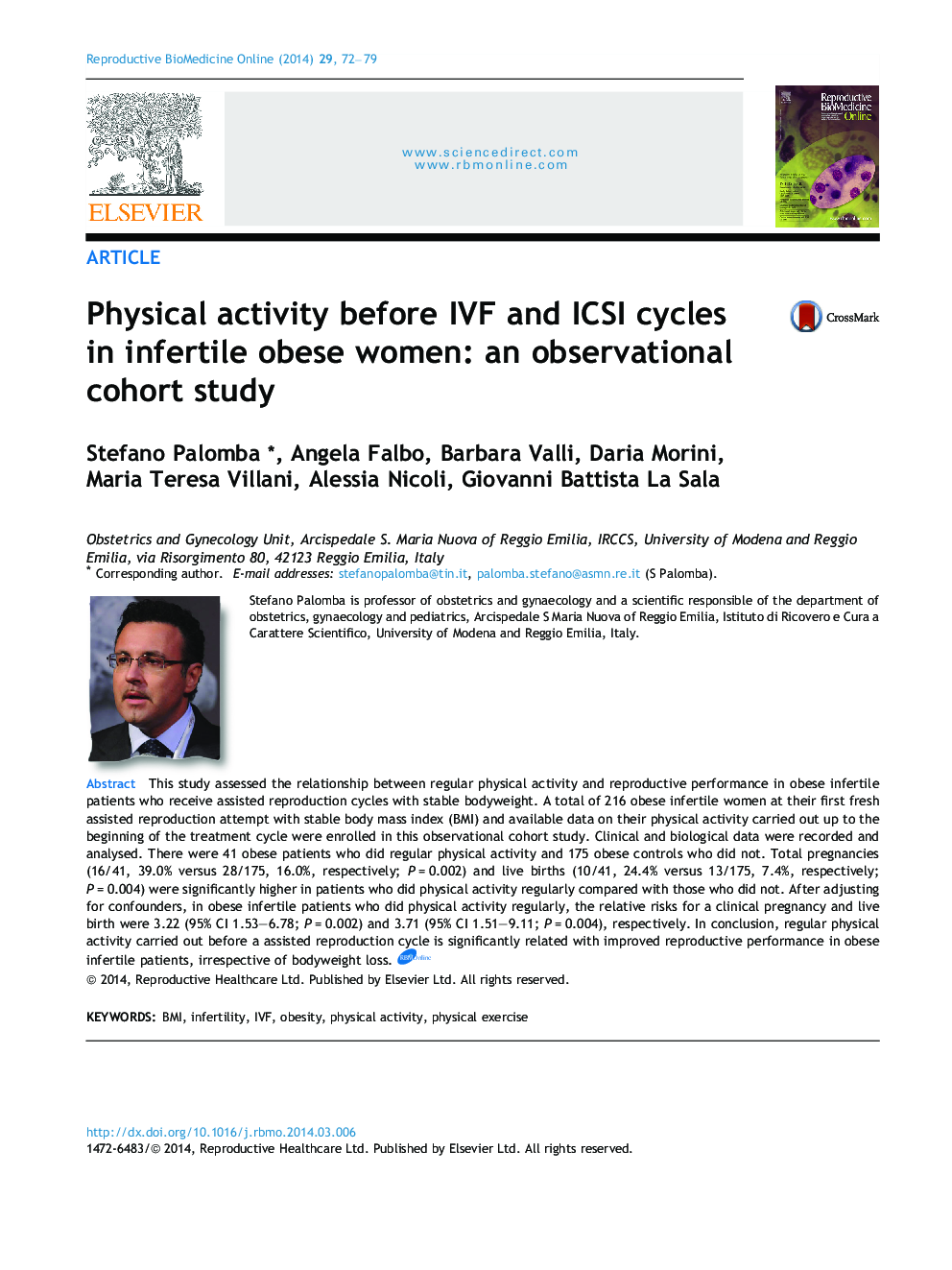| Article ID | Journal | Published Year | Pages | File Type |
|---|---|---|---|---|
| 3970142 | Reproductive BioMedicine Online | 2014 | 8 Pages |
This study assessed the relationship between regular physical activity and reproductive performance in obese infertile patients who receive assisted reproduction cycles with stable bodyweight. A total of 216 obese infertile women at their first fresh assisted reproduction attempt with stable body mass index (BMI) and available data on their physical activity carried out up to the beginning of the treatment cycle were enrolled in this observational cohort study. Clinical and biological data were recorded and analysed. There were 41 obese patients who did regular physical activity and 175 obese controls who did not. Total pregnancies (16/41, 39.0% versus 28/175, 16.0%, respectively; P = 0.002) and live births (10/41, 24.4% versus 13/175, 7.4%, respectively; P = 0.004) were significantly higher in patients who did physical activity regularly compared with those who did not. After adjusting for confounders, in obese infertile patients who did physical activity regularly, the relative risks for a clinical pregnancy and live birth were 3.22 (95% CI 1.53–6.78; P = 0.002) and 3.71 (95% CI 1.51–9.11; P = 0.004), respectively. In conclusion, regular physical activity carried out before a assisted reproduction cycle is significantly related with improved reproductive performance in obese infertile patients, irrespective of bodyweight loss.Body weight loss improves not only spontaneous pregnancy rates but also those of assisted reproductive techniques (ARTs). Moreover, almost all studies refer to body weight loss due to lifestyle intervention programs consisting in hypocaloric diet and increased physical activity. Instead, very little is known about the specific effects of physical activity alone on human reproduction. Based on these considerations, we designed the present study to assess the relationship between regular physical activity and reproductive outcome in infertile obese patients who receive ARTs. Two-hundred-sixteen obese infertile women with stable body mass index (BMI) and at their first fresh ART attempt were enrolled, and clinical and biological data were recorded and analyzed. Our results demonstrate that the chances to obtain a pregnancy and a baby are 3-fold higher in obese infertile patients who does physical activity regularly in comparison with those who does not, suggesting that regular physical activity before ART cycles improves the reproductive performance in obese women irrespective to body weight loss.
